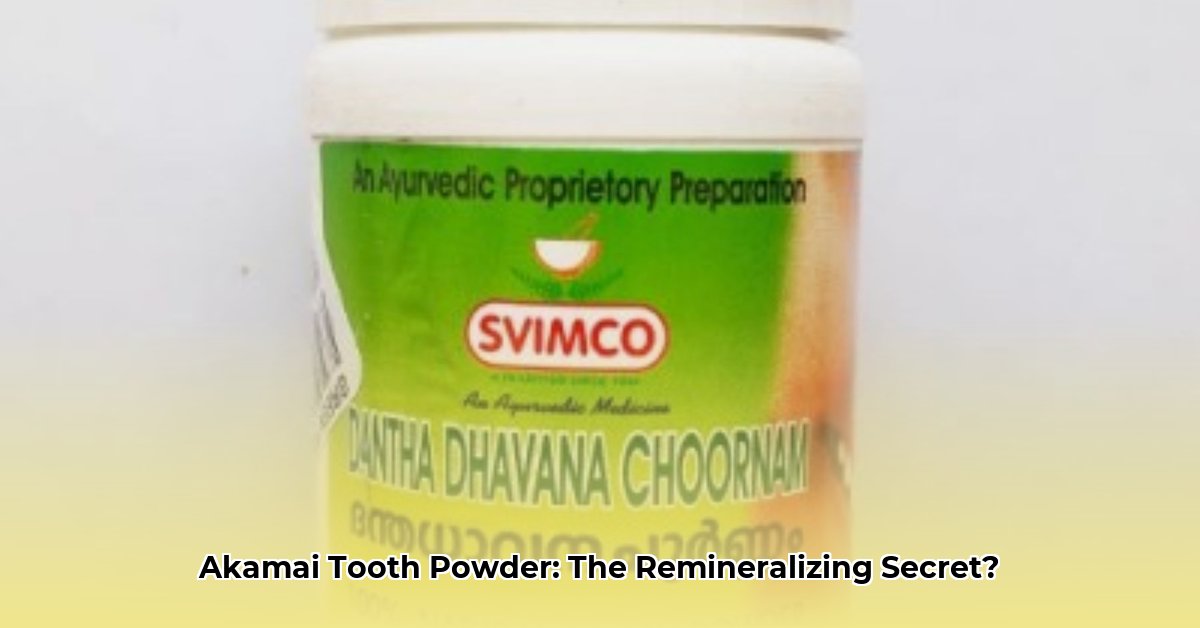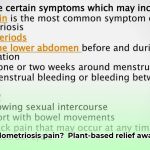Thinking about ditching your regular toothpaste for something more natural? Akamai tooth powder is making waves, promising healthier teeth and gums while being kind to the planet. But does it really live up to the hype? This review dives deep into what Akamai is all about – exploring its ingredients, how it works, and whether the science backs up its claims. We’ll also weigh the pros and cons, so you can decide if it’s the right choice for you. We’ll cover everything from the everyday use to what dentists think, helping you make an informed decision about adding this unique tooth powder to your routine.
Akamai Tooth Powder: A Natural Oral Hygiene Solution
Akamai tooth powder is a unique oral hygiene product that’s gaining attention as a natural alternative to traditional toothpastes. Unlike traditional toothpaste, it’s a powder, focusing on a natural approach to keeping your teeth healthy and promoting enamel strength. But is it all it’s cracked up to be? Let’s take a closer look at its effectiveness and potential drawbacks.
Understanding the Fundamentals of Akamai Tooth Powder
Akamai tooth powder distinguishes itself by its format, being a powder instead of a paste, and its commitment to using natural ingredients rather than the synthetic chemicals often found in conventional toothpaste brands. The company emphasizes remineralization – strengthening your teeth’s enamel – and environmentally friendly practices, which appeal to many consumers. This means less plastic waste and a more natural approach to your dental routine. But does this natural approach really work as well as, or better than, conventional toothpaste in cavity prevention? That’s the crucial question to consider.
Decoding the Ingredients: What’s Actually Inside Akamai?
Akamai utilizes a blend of carefully selected natural minerals and clays in its formulation. They highlight “living clays,” which are believed by some to help remove toxins from your mouth and contribute to oral health. These clays are often rich in calcium montmorillonite and kaolin. They also include fulvic acid, a substance that some believe helps your body absorb minerals more efficiently, boosting the remineralization process. A key difference is that Akamai skips common additives like fluoride, glycerin, and artificial sweeteners, frequently found in most commercial toothpastes. An essential oil-free version is also available for those with sensitive teeth.
However, a California Proposition 65 warning on their packaging raises concerns that require more explanation for consumers. This warning indicates the presence of a chemical (often trace amounts of heavy metals found naturally in the clay) that, at certain levels, might pose a health risk. Akamai addresses this by stating that the heavy metals are bound to the clay and not bioavailable, meaning they are not absorbed by the body.
Examining the Evidence: Does Akamai Tooth Powder Truly Work?
Akamai highlights a high Cleaning Efficiency Index (CEI) – a score of 2.64, which is a promising indicator of cleaning effectiveness. A higher CEI generally suggests better cleaning of teeth. They also report a Relative Dentin Abrasivity (RDA) of 81 and a Pellicle Cleaning Ratio (PCR) of 182. These scores suggest it cleans effectively without being overly abrasive.
While some lab tests and user reviews suggest positive results, more extensive clinical trials are always beneficial to confirm these findings. It’s important to remember that anecdotal evidence is not a substitute for scientific research.
Weighing the Options: The Good and the Not-So-Good of Akamai
Let’s examine the benefits and potential drawbacks of using Akamai tooth powder:
| Pros | Cons |
|---|---|
| Natural ingredients, minimally processed | Lacks extensive clinical trials to confirm long-term effectiveness |
| Eco-friendly packaging | Unique texture; may not appeal to everyone |
| High Cleaning Efficiency Index (CEI) of 2.64 | May be more expensive than conventional toothpaste |
| Essential oil-free option available | Requires further research on long-term benefits |
Practical Application: What’s the Experience of Using Akamai Like?
Using Akamai differs from the experience of using regular toothpaste. It’s a powder, not a paste, and you simply dip your wet toothbrush into it.
How to Use Akamai Tooth Powder:
- Wet your toothbrush.
- Shake off excess water.
- Dip the top half of your toothbrush in the powder (you don’t need much).
- Brush gently and mindfully for two minutes.
- Rinse thoroughly, or swish with water and spit, leaving a trace amount to maximize mineral absorption.
The texture is quite different – some people love it, appreciating the departure from conventional pastes, while others find that it requires some getting used to before it becomes a comfortable part of their oral hygiene routine. It might not be the most convenient choice for everyone based on their preferences.
Addressing Uncertainties: Unanswered Questions and Future Research Needs
While initial data is promising, further long-term studies are needed to fully understand how Akamai affects oral health over time. Independent studies comparing Akamai to established remineralizing toothpastes are needed to provide more definitive conclusions. Also, further research into the effects of its “living clays” on the oral microbiome would be valuable.
Making the Decision: Should You Switch to Akamai Tooth Powder?
Whether or not to incorporate Akamai into your oral care is a personal decision. It presents an appealing natural alternative, particularly for individuals who value environmental sustainability and prefer products with minimal additives. However, it is crucial to recognize that the long-term benefits remain unconfirmed, the cost may be higher, and the unique texture might not suit everyone’s preferences. Be sure to make an informed decision that aligns with your specific priorities and preferences. Importantly, always consult with your dentist regarding any significant changes to your dental hygiene routine to ensure that your dental health stays on the right track.
How Does Akamai Mineral Toothpowder Compare to Hydroxyapatite Toothpastes for Remineralization and Enamel Care?
Key Takeaways:
- Akamai toothpowder prioritizes ingredient purity and remineralization with a natural approach.
- It uses calcium montmorillonite and kaolin clays, eliminating many common ingredients found in traditional toothpastes.
- A higher concentration of these clays is found in the tooth powder, further enhancing its potential remineralizing properties.
- The powder format may present a barrier to some consumers due to its unconventional application.
- Akamai’s claims regarding remineralization require further scientific backing through long-term clinical trials.
- Direct comparison with hydroxyapatite toothpastes requires more data to establish definitive conclusions.
- Transparency is key regarding third-party testing and verification of claims.
Exploring Akamai’s Unique Approach to Natural Remineralization
Akamai’s mineral toothpowder sets itself apart through its emphasis on natural ingredients and a streamlined formulation. Instead of synthetic additives, it leverages the naturally occurring remineralizing properties of calcium montmorillonite and kaolin clays found naturally in the environment. These clays, alongside baking soda and Himalayan sea salt, form the essential components of their formula. But how does this approach compare to the more widely known hydroxyapatite toothpastes and their chemical compositions? That’s the central question for comparison.
Ingredient Comparison: Akamai Tooth Powder vs. Hydroxyapatite Toothpastes
The primary distinction arises from the core remineralizing agent used in each product. Hydroxyapatite toothpastes primarily rely on either nano-hydroxyapatite (nHAP) or natural hydroxyapatite (nHAP) particles to replenish enamel. Akamai, on the other hand, uses a carefully selected blend of mineral-rich clays as its remineralizing ingredients. While both approaches are designed to replenish tooth enamel, the bioavailability and overall effectiveness of each approach may differ, and further scientific research is necessary to provide definitive conclusions. One notable aspect of Akamai’s approach is the deliberate exclusion of potentially irritating ingredients such as glycerin, a common component in many toothpastes.
Evaluating Cleaning Power and Enamel Safety Standards
Akamai documents an “extremely effective” Cleaning Efficiency Index (CEI) rating of 2.64, suggesting that the powder possesses strong stain removal capabilities. Additionally, the powder’s relatively low Relative Dentin Abrasivity (RDA) score of 81 suggests a commitment to maintaining minimal enamel wear during use. An RDA value of 81 is generally considered safe for daily use. However, more comparative data against a broader range of toothpastes, including those containing hydroxyapatite, is needed to fully benchmark Akamai’s performance in this crucial area.
Powder Format: Weighing the Advantages and Trade-Offs
The adoption of a powder format introduces a significant distinction between Akamai and traditional toothpaste. While some consumers appreciate the purity of the ingredients and the reduced environmental impact due to less packaging, others might find it less convenient than conventional toothpaste tubes. Akamai recognizes these concerns and recommends methods to customize the powder to achieve a more familiar, paste-like consistency.
Regulatory Compliance and Scientific Validation
Akamai’s product packaging includes a Proposition 65 warning due to the presence of trace amounts of heavy metals in the clay components. The company asserts that the clay’s intrinsic properties prevent absorption of these heavy metals.
For consumers seeking clarity and reassurance, requesting third-party testing reports directly from Akamai can offer additional transparency. These reports should ideally verify the levels of heavy metals present and confirm their non-bioavailability, providing a stronger basis for informed decision-making. In
- Plant Based Diet Breast Cancer: Research-Based Benefits - December 16, 2025
- Plant-Based Diet Ulcerative Colitis Remission: Proven Benefits - December 15, 2025
- Plant-Based Diet and Fibroids: Reduce Symptoms Now - December 13, 2025










